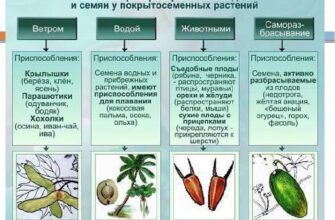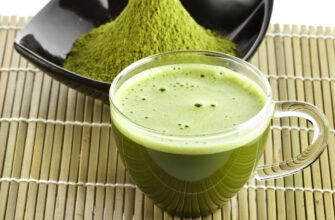- Комбинированный урок «Еда и ее приготовление» по английскому языку в 10-м классе
- Ход урока
- 1. Answer the questions. Possible answers.
- 2. Poem. “I like sandwiches.” (One cadet will recite a poem)
- 3. Match the English proverbs with their equivalents.
- 4. Sort out the words into appropriate columns.
- 5. Find the odd word and cross it out.
- 6. Adjectives that describe food and drink. Put the correct group of adjectives to each noun.
- 7. Listening. Dialogue “In a cafe”. Complete the dialogue with the words from the box.
- 9. Firm recipe of “Larry’s cafe”.
- 10. Look at the picture to know how to set the table.
- 11. Additional task. Jokes.
- 15. Sum-up.
- Answer sheet
- 1. Sort out the words into appropriate columns.
- 2. Find out the odd word and cross it out.
- 3. Adjectives that describe food and drink. Put the correct group of adjectives to each noun.
- 4. Listening. Dialogue “In a cafe”. Complete the dialogue with the words from the box.
- Конспект урока Spotlight 8 «Способы приготовления пищи «
Комбинированный урок «Еда и ее приготовление» по английскому языку в 10-м классе
Цели и задачи урока:
- активизировать применение полученных знаний, умений и навыков по теме,
- обобщить и систематизировать ЗУНов по изученной теме;
- совершенствовать коммуникативные и аудитивные навыки по теме;
- развивать интерес к изучению ин. яз., используя прием коммуникативной игры.
- проверить усвоение лексического материала по теме.
Методы обучения, используемые на уроке:
- по источнику получения знаний – слово учителя, беседа, наглядные пособия и ТСО;
- по уровню познавательной деятельности – репродуктивный с элементом коммуникативной игры.
- по способу мышления – анализ и синтез при работе с ЛЕ;
- по участию ученика – активный;
ТСО и учебная литература:
- Дроздова Т. Ю. “Everyday English”. Учебное пособие для старшеклассников школ с углубленным изучением языка. Издательство “Химера”, Санкт-Петербург.
- Брюсова Н.Г., Лебедева Н.А. “Устные темы для развития разговорной речи”. Дидактические материалы. Издательство “Дрофа”, Москва.
- Книга для учащегося “Laser” Pre-FCE, Unit 7, издательство “Macmillan”, 2004.
- CD “Laser”, Unit 7, приложение к учебнику “Laser” Pre-FCE, издательство “Macmillan”,
- 2004.
- CD Ширяева И.В. “Разговорный английский в диалогах” (дорожка №16, диалог №1).
- мультимедийная презентация в Power Point (используется на протяжении всего урока).
- мультимедийная установка.
- CD проигрыватель.
- Answer sheets для самоконтроля учащихся.
- Продукты, необходимые для приготовления овощного супа.
- Меню.
План урока:
Ход урока
Teacher: Good morning, dear cadets and guests. I am glad to see you today. I hope you are fine and are ready to work hard at our lesson. The topic of our lesson today is “Food and cooking”. We’ll speak about your favourite dishes, recipes and table manners, recite a poem, dramatize a dialogue between a waiter and visitors, listen to a conversation about making order in a cafe and do some tasks to check up your vocabulary. So, let’s start.
1. Answer the questions. Possible answers.
– What do you usually eat for breakfast? (porridge, oatmeal or buckwheat, a glass of tea or coffee bread with butter and cheese, an apple or an orange)
– What meals do you have every day? (I have 4 meals a day: breakfast, lunch, dinner and supper)
– What kind of soup do you prefer? (I prefer chicken broth or vegetable soup)
– Which is your favourite second course? (Beef chops with mashed potatoes or sausages with stewed cabbage)
– What dessert do you like best? (cakes, pies, ice-cream and puddings)
– Do you help your mother to cook meals? (When I’m at home I usually help my mum to cook
something delicious. I can fry pan-cakes.)
– Have you ever been to any bar or cafe? (Yes, I’ve been in a bar recently with my friends.
I ordered a pizza, milk cocktail and chocolate pie)
If, yes, what did you have there?
– Do you like sandwiches? (Yes, I do. They are tasty and easy to be cooked)
2. Poem. “I like sandwiches.” (One cadet will recite a poem)
Sandwiches are beautiful.
Sandwiches are fine.
I like sandwiches; I eat them all the time.
I eat them for my supper and I eat them for my lunch.
If I had a hundred sandwiches, I eat them all at once.
A sandwich may be egg or cheese or even peanut butter,
But they all taste so good to me,
It isn’t even matter,
Jam or ham or cucumber, any kind will do.
I like sandwiches,
How about you?
Cadets in chorus: We like sandwiches too.
Teacher: You know that there are many sayings and proverbs about eating in English language. Let’s see how well you know them.
3. Match the English proverbs with their equivalents.
| 1) The appetite comes with eating. | a) О вкусах не спорят. | 2) After dinner sleep a while, after supper walk a mile. | b) Яблоко в день и не знай врачей. | 3) An apple a day keeps the doctor away. | c) Аппетит приходит во время еды. | 4) Don’t live to eat, but eat to live. | d) После обеда поспи немного, после ужина прогуляйся с милю. | 5) Tastes differ. | e) Не жить, чтобы есть, а есть, чтобы жить. |
Teacher: You see many words on our topic on the slide. Could you, please, sort them out into necessary columns? Do it in your answer sheets and then compare with the answers on the slide. For each right answer add a point. At the end of the lesson everyone will count his score and put himself a mark.
4. Sort out the words into appropriate columns.
Honey, wine, soup, chops, pudding, lemonade, chicken, jam, green salad, strawberry, broth, mashed potatoes, apple pie, cheese hamburger, grapes, juice, ham, cream, tea, cherry.
| First course | Second course | Desserts | Appetizers | Fruit | Drinks |
Teacher: One more task. One word in a line is logically incorrect. Find it and explain why it is extra.
5. Find the odd word and cross it out.
- bacon, beef, turkey, pork, lamb,
- carrot, melon, onion, cabbage, potatoes,
- grapes, apple, pear, plum, nut,
- beer, lemonade, tea, sugar, coffee,
- ice-cream, toast with jam, pea-soup, cake.
Teacher: There are many adjectives which we use to describe products. Find the most suitable descriptions for the next nouns.
6. Adjectives that describe food and drink. Put the correct group of adjectives to each noun.
White/brown, hot/mild, fresh/frozen, dry/sweet, rare/medium/well-done, black/white, fizzy/still.
- wine,
- bread,
- coffee,
- mineral water,
- curry,
- peas,
- steak,
Teacher: Some of us prefer to eat at home. It is more comfortable and relaxing. But there are some situations when we have to go to some place to it. Let’s listen to a dialogue and try to understand how to behave ourselves in a cafe. While listening, your must complete the gaps.
7. Listening. Dialogue “In a cafe”. Complete the dialogue with the words from the box.
| Red, roasted, napkins, recommend, mineral, specialty, prefer, bring. |
Visitor: What can you__for the meat dish?
Waitress: What do you__beef or pork?
Visitor: What do you have which is not very__?
Waitress: Then I do recommend our__: stewed pork with vegetables. It is very good indeed.
Visitor: OK. I’ll take it.
Waitress: Would you like some __wine. It has a wonderful bouquet.
Visitor: No, thank you. Just some __water. But _ me a bottle of this one. I’ll take this with me.
Waitress: OK. Anything else for you?
Visitor: Yes, there are no __.
Teacher: Our cadets also know how to visit and make orders in a cafe. They want to show us how to communicate with a waiter. (3 cadets role-play the polylogue).
8) Speaking. “Larry’s cafe.”
A, B: Good evening.
A: A table for 2, please.
W: Yes, sir. Right this way.
B: What shall we have today?
A: I’m afraid we don’t know much about the special dishes.
W: Can I help you? Here is the menu.
B: Thank you. Well, let’s start with soup.
W: What do you say to steak or fried chicken?
A: I think we’ll order 2 steaks, green salad and 2 chicken sandwiches.
B: And for dessert we’ll have vanilla ice-cream and cookies.
W: What will you drink, sir?
A: A glass of orange juice.
W: Very good. And you, sir?
B: May I have a cup of coffee?
W: Certainly, sir.
Teacher: “Larry’s cafe” is the best in our city and its chef is a very popular person. The clients often thank him for his creations. He wants to show us the specialty of the day.
9. Firm recipe of “Larry’s cafe”.
(One cadet shows how to cook vegetable soup with some comments).
- Peel and cut into small pieces 3 onions, 3 turnips, 1 carrot and 4 potatoes.
- Put them into a pan with 100 g of butter, 150 g of ham and a bunch of parsley.
- Pass them 10 minutes over a sharp fire.
- Add a spoonful of flour, mix well.
- Add 2 liters of broth and 0.5 liters of boiling milk.
- Boil up, keeping it stirred.
- Skim it.
- Add a little salt and sugar.
- Run it through a sieve into another pan.
- Boil again and serve with fried bread in it.
- Bon appetite.
Teacher: It is very important to know how to lay the table, before inviting guests. Cadet Ivanov reminds you these table rules.
10. Look at the picture to know how to set the table.
You should put a plate in the middle of a table. The place for meat or fish fork is on the left of the plate. It’s better to set a meat or fish knife on the right of the plate. You should put a bread or cheese knife between a soup and meat or fish knife. The best place for a glass is the right hand corner. And as for spoon and fork for dessert you should set them opposite the plate. Please, don’t forget to follow the table manners while eating. Thanks for your attention.
11. Additional task. Jokes.
— Can’t you tell the difference, sir, by the taste?
-Well, if you can’t tell the difference, what does it matter which is it?
— Don’t worry, sir, the spider on the bread will catch it.
— Sit down, sir, we serve anybody.
— I have no idea, sir. All insects look the same to me.
15. Sum-up.
a) Did you like the lesson?
b) What task was the most interesting for you?
c) What task was the most difficult for you?
d) Who was the brilliant pupil today?
e) Count your total score in your answer sheets and put yourself a grade.
Teacher: “Larry’s Cafe wants to offer to the cadets and guests ham sandwiches. Help yourselves!
Answer sheet
1. Sort out the words into appropriate columns.
Honey, wine, soup, chops, pudding, lemonade, chicken, jam, green salad, strawberry, broth, mashed potatoes, apple pie, cheese hamburger, grapes, juice, ham, cream, tea, cherry.
| first course | second course | desserts | appetizers | fruit | drinks |
20 points. 1 point for the right answer.
2. Find out the odd word and cross it out.
- bacon, beef, turkey, pork, lamb
- carrot, melon, onion, cabbage, potatoes
- grapes, apple, pear, plum, nut
- beer, lemonade, tea, sugar, coffee
- ice-cream, toast with jam, pea-soup, cake
5 points. 1 point for each right answer.
3. Adjectives that describe food and drink. Put the correct group of adjectives to each noun.
White/brown, hot/mild, fresh/frozen, dry/sweet, rare/medium/well-done, black/white, fizzy/still
- wine,
- bread,
- coffee,
- mineral water,
- curry,
- peas, steak.
7 points. 1 point for each right answer.
4. Listening. Dialogue “In a cafe”. Complete the dialogue with the words from the box.
| Red, roasted, napkins, recommend, mineral, specialty, prefer, bring. |
Visitor: What can you__for the meat dish?
Waitress: What do you__beef or pork?
Visitor: What do you have which is not very__?
Waitress: Then I do recommend our__: stewed pork with vegetables. It is very good indeed.
Visitor: OK. I’ll take it.
Waitress: Would you like some __wine. It has a wonderful bouquet.
Visitor: No, thank you. Just some __water. But _ me a bottle of this one. I’ll take this with me.
Waitress: OK. Anything else for you?
Visitor: Yes, there are no __.
Источник
Конспект урока Spotlight 8 «Способы приготовления пищи «
Класс 8 Урок 13 Дата:___________________
Тема урока: Способы приготовления пищи
Цель: Подготовка к ведению монологической речи по теме «Еда, приготовление пищи»
Задачи обучающие. Повторить изученные л/е по теме «Продукты» и освоить их во всех видах речевой деятельности. Ввести новые л/е по теме «Еда. Способы приготовления здоровой пищи». Развивать навыки говорения по теме.
Задачи развивающие. Развивать память, мышление, воображение. Развивать способность критически мыслить и обобщать материал.
Задачи воспитательные. Воспитывать эстетический вкус, соблюдать правила общения с одноклассниками.
Планируемые результаты: Развитие этических и эстетических чувств; формирование умений пользоваться наглядными средствами предъявления языкового материала; формирование умения распознавать и употреблять в речи изученные лексические единицы.
Оборудование. компьютер, интерактивная доска / телевизор, учебник.
Тип урока: урок открытия нового знания
1. Мотивационно-целевой этап
Развивать навыки употребления изученной ранее тематической лексики. Развивать мотивацию учащихся к дальнейшему изучению темы «Еда и покупки». Организовать самостоятельное формулирование вопросов и постановку цели.
Начало урока со скороговорки.
Прослушивание аудио (скороговорка)
— проводит подготовительную работу по отработке произносительных навыков. Организует работу с материалом мультимедийной презентации.
Peter Piper picked (Питер Пайпер съел)
A peck of pickled peppers; ( Пуд маринованного перца 😉
A peck of pickled peppers ( Пуд маринованного перца )
Peter Piper picked. ( Питер Пайпер съел .)
-отвечают на вопросы учителя-какая дата, какой день недели.
-повторяют за учителем скороговорку.
2. Ориентировочный этап
Постановка учащихся значимых для них целей.
— помогает учащимся сформулировать для них цели, и составить план деятельности, через которую будут получены недостающие знания и умения.
-What is the title of the lesson?
-So, what shall we speak about? (Итак, о чём мы будем говорить сегодня на уроке?)
-Correctly, we’ll talk about food.
-What do you usually eat at school?
3. Поисково-исследовательский этап
Развитие умений прогнозирования содержания текста по невербадльным опорам.
-задает вопросы учащимся (упр 2 стр 26)
(What do you think an “OBENTO”; Which country is it from)
-слушают и придумывают 3 вопроса по тексту об обенто.
Do students make their own obentos? What foods are obentos made of? Why do they make attractive shapes with their food?
— выполняют упражнение под слова учителя и видеозапись
Повторение изученных и введение новых слов по теме «продукты питания и способы приготовления пищи»;
Развитие интеллектуальных умений (анализ, сопоставление, сравнение)
Беседа, использование мультимедийной презентации.
-Учитель обращает внимание учащихся на презентацию с новыми словами по теме «способы приготовления пищи»
-Учитель предлагает учащимся найти лишнее слово в каждой строчке (упр 5 стр 26)
6. Рефлексивно-оценочный этап
Осмысление процесса результата деятельности
Информация о домашнем задании, инструктаж по его выполнению
Учитель задаёт домашнее задание. Your home task is: WB ex. 1, 2,3,4 p. 26
— предлагает оценить достижения цели урока: на все ли вопросы найдены ответы.
Если Вы считаете, что материал нарушает авторские права либо по каким-то другим причинам должен быть удален с сайта, Вы можете оставить жалобу на материал.
Источник





